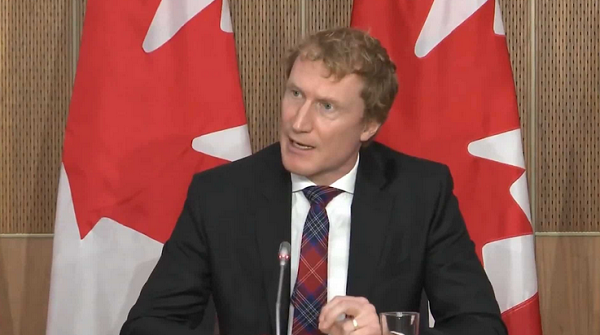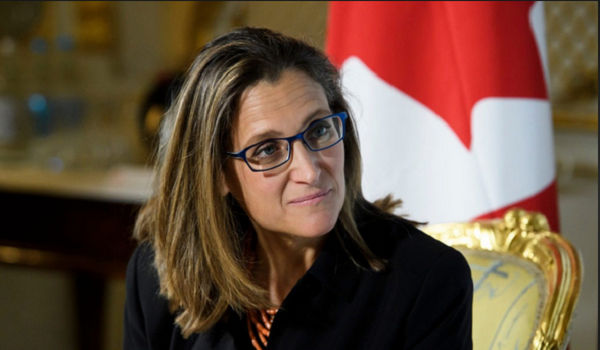Ontario to see largest drop in incoming international students: Immigration minister
Ontario will see the largest drop in study permits issued in Canada — down to just 141,000 this year from 239,753 in 2023 — under the federal government’s new cap on international students, according to official data revealed on Friday.
More than two months after announcing a plan to rein in the country’s out-of-control international enrolment growth, Immigration Minister Marc Miller released a statement detailing the finalized numbers of incoming post-secondary students each province and territory is projected to receive in 2024, as well as the formula behind the allocations.
“These results will help me make decisions on allocations for 2025,” Miller said in a statement. “We will continue to work collaboratively with provinces and territories to strengthen the International Student Program and to provide international students with the supports they need to succeed in Canada.”
Across Canada, 291,914 new study permits are expected to be issued this year, representing a 28 per cent decline from 404,668 in 2023. The numbers exclude those to be granted to students enrolled in primary and secondary schools, as well as graduate programs, exempted from the cap.
The overall cut is not as deep as anticipated when Miller in January announced plans to reduce the number of new study permits issued by 35 per cent from 2023’s level, to 364,000.
However, Ontario remains the single biggest loser and will see a whopping 41 per cent drop in new study permits issued under the cap, followed by British Columbia, which is set to receive 18 per cent fewer international students, going to 49,800 from 60,864 in 2023.
Four other provinces will see a 10 per cent decline: Manitoba, New Brunswick, Nova Scotia and Prince Edward Island.
Meanwhile, other provinces will now have more spots available if they wish. Alberta, Newfoundland and Labrador, Quebec and Saskatchewan can see a growth of 10 per cent in intake while Nunavut, Yukon and the Northwest Territories will have room to grow as they all received fewer than 100 study permits last year.
“We are protecting the integrity of our province’s postsecondary education system by attracting the best and brightest international students to Ontario to study in areas that are critical to our economy,” Jill Dunlop, Ontario’s minister of colleges and universities, said in a statement.
“We have been working with postsecondary institutions to ensure international students are enrolled in the programs to support a pipeline of graduates for in-demand jobs.”
Based on what he called a “net zero growth” formula, Miller said the national cap is based on the volume of expiring study permits this year. This means that the number of international students coming to Canada in 2024 equals the number of students whose permits expire this year.
Miller initially suggested that the study permit allocations would be based on each province’s relative population size. Ontario would have seen its international student intake in 2024 dropped by 62 per cent under that model.
On Friday, he said other factors were considered before the numbers were finalized.
“For provinces that would receive more international students in 2024 than in 2023 based on population share, we adjusted their allocation to limit growth to 10 per cent compared to 2023,” he said.
“For provinces that would receive fewer international students in 2024 than in 2023, we adjusted their allocation to lessen the negative impact in the first year and support broader regional immigration goals.”
Factoring in that 60 per cent of study permit applications are approved, the Immigration Department will process a total of 552,095 applications to reach the 291,914 target. Given study permit approval rates vary across provinces, Miller said he also topped up allocations for those with below-average approval rates.
As a result, Ontario’s public post-secondary institutions can take in as many as 235,000 applications in 2024, given that the province has decided to give almost all its allocated spots to the 24 colleges and 23 universities that are funded by taxpayers.
Miller warned that there are still other factors that may influence the actual number of international students arriving this year that are beyond the department’s control. For instance, provinces and territories with room to grow may not end up using all spots, while approval rates may fluctuate.
Critics say the government’s adjustments were welcomed as finalized numbers help provide much-needed clarity for international students considering studying in Canada.
“The government has acknowledged that approval rates have historically been inconsistent across provinces and has buffered those numbers accordingly through one-time allocation top-ups to provinces like Saskatchewan,” said Meti Basiri, CEO of ApplyBoard, a Kitchener-based online marketplace for learning institutions and international students.
“It has raised the allocations for provinces that would otherwise have seen the most significant restrictions. The impact on Ontario in particular will still be significant, but the adjusted allocations will ease the transition.”
This article was first reported by The Star
















